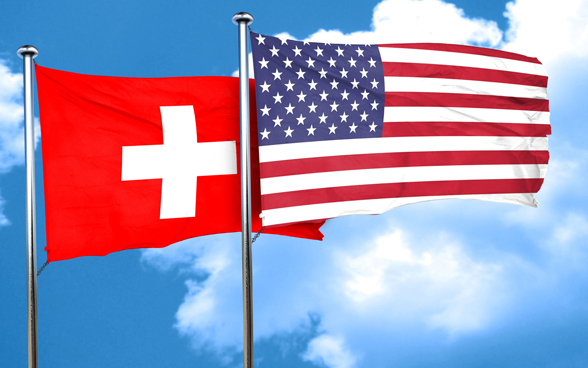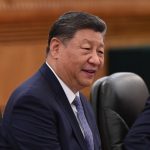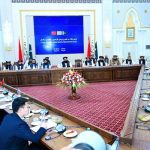Swiss US Tariff Deal 2025: Navigating Uncertainty Amid Escalating Bilateral Strains
In the evolving landscape of international commerce, the Swiss US tariff deal 2025 remains a pivotal point of focus, as Switzerland grapples with heightened economic pressures from across the Atlantic. Swiss President Karin Keller-Sutter has refrained from committing to any definitive timeline for resolving ongoing disputes with U.S. President Donald Trump, amid a backdrop of deteriorating diplomatic and commercial ties between the two longstanding partners.
Origins of the Trade Friction and Presidential Dialogue
The current impasse traces back to a pivotal late-July telephone discussion between Keller-Sutter and Trump, which failed to yield the anticipated breakthroughs. In its aftermath, during August, the U.S. leader enacted a substantial 39% duty on imports originating from Switzerland, citing the persistent and widening trade imbalance in favor of the European nation as the core rationale. This levy, one of the most severe among those levied on various global trading counterparts, has amplified concerns within Swiss economic circles about potential disruptions to key export channels.
Keller-Sutter encountered sharp rebukes at home for her approach during that critical exchange, with detractors pointing to perceived shortcomings in addressing American grievances. Trump himself voiced public frustration shortly thereafter, asserting in media appearances that the Swiss counterpart appeared unwilling to fully engage with his pointed remarks regarding the deficit’s magnitude and implications. Such exchanges have not only highlighted the fragility of the negotiations but also underscored the personal dynamics influencing high-stakes policy decisions.
Domestic Backlash and Strategic Responses from Bern
The fallout from the conversation prompted widespread scrutiny in Swiss outlets and parliamentary forums, where officials faced questions about the efficacy of pre-tariff diplomacy. In response, the federal administration in Bern has intensified its outreach efforts, formulating a comprehensive counterproposal designed to foster goodwill and recalibrate the fiscal equation. This initiative encompasses firm commitments to ramp up direct investments in the American marketplace, alongside targeted initiatives intended to diminish the overall U.S. shortfall through enhanced bilateral exchanges.
Central to these overtures are pledges that could bolster American job creation and technological collaboration, positioning Switzerland as a proactive ally rather than a passive participant. By weaving in elements of mutual benefit, such as joint ventures in innovation hubs, the package seeks to transform the narrative from confrontation to constructive partnership. These maneuvers reflect a calculated effort to de-escalate the rhetoric and pave the way for concessions that might temper the tariff’s bite without compromising national interests.
Keller-Sutter’s Perspective and Ongoing Diplomatic Channels
As the figurehead of Switzerland’s unique annual rotating executive system, Keller-Sutter’s mandate draws to a close by December 31, 2025, adding a layer of temporal urgency to her stewardship of these talks. In a candid exchange featured in the Friday edition of the respected Tages-Anzeiger daily, she emphasized the provisional nature of progress, responding to queries on a potential 2025 accord by noting, “It’s not possible to forecast.” She elaborated that ultimate resolution hinges squarely on affirmative signals from the Oval Office, illustrating the asymmetrical leverage at play.
Despite the hurdles, Keller-Sutter affirmed that her team’s engagements with Washington persist unabated, spanning informal consultations and formal briefings. These dialogues aim to dissect the tariffs’ broader ramifications while exploring avenues for reciprocity, such as streamlined access for U.S. products into Swiss markets—where barriers remain notably low. The continuity of these interactions signals a commitment to perseverance, even as external variables like geopolitical shifts introduce volatility.
Sectoral Vulnerabilities and Broader Economic Ramifications
Keller-Sutter highlighted the uneven footprint of these measures, clarifying that the affected portion constitutes under 10% of Switzerland’s total outbound shipments to the U.S. Nevertheless, she cautioned that select industries bear a disproportionate burden, exacerbating pre-existing strains. Precision engineering firms, in particular, confront compounded headwinds, including subdued demand in adjacent markets like Germany, where industrial slowdowns have already curtailed orders and profitability.
For these manufacturers, the tariffs compound logistical costs and erode competitive edges in a sector renowned for its ingenuity and reliability. Watchmakers, confectioners, and pharmaceutical exporters, though less directly targeted, monitor developments warily, fearing ripple effects on supply chains and consumer sentiment. Amid these challenges, Swiss policymakers are weighing ancillary supports, from fiscal incentives to diversification drives, to fortify resilience. As the Swiss US tariff deal 2025 hangs in the balance, the interplay of diplomacy, economics, and fortitude will determine whether this chapter ends in relief or prolonged adversity, with implications resonating far beyond the Alps.














